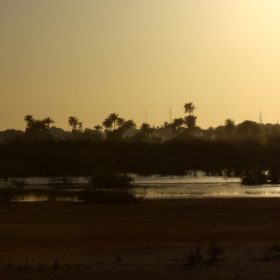
The country’s power utility has completed the pre-selection process to seek developers for a 20 MW solar project in the Banjul region. The project will feature up to four PV plants and will be developed under the national Electricity Restoration and Modernization Project.
Gambia’s National Water and Electricity Company (NAWEC) has completed the preliminary phase of a tender for a 20 MW solar project in the Greater Banjul area in the west of the country.
The facility is being developed under the $121 million Electricity Restoration and Modernization Project for the Gambia, funded by the World Bank, the European Union and the European Investment Bank. The initiative aims to improve power and increase the West African nation’s grid capacity. Around 2 million Gambians rely on just 120 MW of installed power generation capacity.
The solar project will be built on 23ha allocated by the Ministry of Lands and Regional Governments and will include up to four PV plants ranging in size from 3 MW to 6 MW of generation capacity. The utility said developing the projects in different locations was not an attractive option. “Splitting up the planned 20 MW and sharing it among three to four different locations will effectively mean multiplying the potential negative impacts of the project by three to four fold,” said NAWEC.
Storage element
The World Bank began seeking consultants for the project in September 2018. At the time, the development lender said the solar facilities could include battery electricity storage to adapt output to demand and minimize grid integration concerns. “Available capacity in the Greater Banjul area deteriorated to 27 MW in October 2017, against a demand of 70 MW – not counting suppressed demand – leading to widespread blackouts when some parts of the [area] reported two to three hours of power per day throughout the summer,” the World Bank said at the time.
The Gambian government and the Economic Community of West African States also want to procure a 150 MW solar plant.
The Gambian electricity network consists mainly of mini-grids which the government hopes to improve by transforming into hybrid mini-grids, integrated with renewable energy generation capacity.
With an electricity access rate of only 35%, Gambia introduced the Renewable Energy Act to promote clean energy in 2013.
Lắp đặt điện mặt trời Khải Minh Tech
https://ift.tt/2X7bF6x
0906633505
info.khaiminhtech@gmail.com
80/39 Trần Quang Diệu, Phường 14, Quận 3
Lắp đặt điện mặt trời Khải Minh Tech
https://ift.tt/2ZH4TRU
Không có nhận xét nào:
Đăng nhận xét